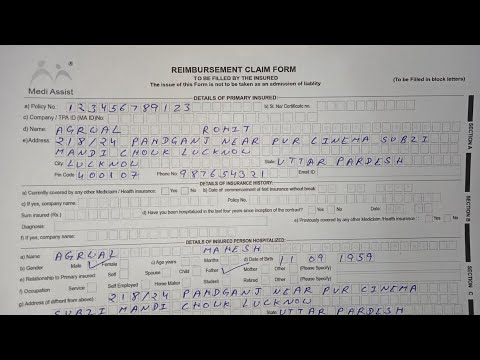Can a Medical Assistant Become an RN?
Contents [show]
Can a medical assistant become an RN? The simple answer is yes! With the right education and training, a medical assistant can make the transition to registered nurse.
Checkout this video:
Can a medical assistant Become an RN?
You may have heard that Medical assistants can become registered nurses (RNs). It’s true! Many Medical Assistants go on to pursue a career in nursing, and there are a few different ways to make the transition.
One option is to take an accredited nursing program. These programs typically take two to three years to complete and result in an associate’s or bachelor’s degree in nursing. Once you have your degree, you’ll need to obtain a license by passing the National Council Licensure Examination (NCLEX).
If you’re still working as a medical assistant while you’re completing your nursing education, you may be able to take advantage of your employer’s tuition reimbursement program. Many employers are willing to help pay for their employees’ education, so it’s worth checking with your HR department to see if this is an option for you.
Once you become an RN, you’ll have many more career opportunities available to you. You can work in a variety of settings, including hospitals, clinics, and doctor’s offices. You may also choose to specialize in a particular area of nursing, such as pediatrics or geriatrics. And because RNs earn a higher salary than medical assistants becoming an RN can also lead to a pay increase.
The Role of a Medical Assistant
Medical assistants are key members of the healthcare team. They work alongside doctors and nurses to provide care for patients. Medical assistants perform a variety of tasks, including taking medical histories, scheduling appointments, processing insurance forms, and providing patient education. Although medical assistants are not licensed healthcare professionals, they must complete a medical assistant training program and pass a certification exam.
In some states, medical assistants may be allowed to perform more advanced tasks, such as administering injections or taking x-rays. However, these tasks must be performed under the supervision of a licensed healthcare professional.
Medical assistants who wish to become registered nurses (RNs) can do so by completing an accredited nursing program and passing the NCLEX-RN exam. Some employers may offer tuition assistance for employees who wish to pursue RN licensure.
The Education and Training of a Medical Assistant
A medical assistant is a person who has received certification from an accredited institution after completing an accredited program and passing a nationally recognized exam, such as the Certified Medical Assistant (CMA) exam administered by the American Association of Medical Assistants (AAMA). The CMA credential denotes that the medical assistant has the knowledge and skills necessary to perform the duties of a medical assistant.
To be eligible to take the CMA exam, an individual must have graduated from an accredited medical assistant program OR have completed at least 5 years of work experience as a medical assistant. There are no specific education requirements to become a medical assistant, although most have completed at least high school or equivalent. Some employers may prefer candidates who have completed postsecondary education, such as a certificate or diploma program from a community college, vocational school, or technical institute.
Can a Medical Assistant Become an RN?
The simple answer is “no,” a medical assistant cannot become an RN. In order to become an RN, an individual must complete an accredited nursing program and pass the National Council Licensure Examination for Registered Nurses (NCLEX-RN). However, some states do allow nurses with experience working as medical assistants to “challenge” the NCLEX-RN exam; this means that they can take the exam without having to complete an accredited nursing program. Challenge exams are not available in all states, and each state has different requirements for eligibility.
The Duties of a Medical Assistant
A medical assistant is a person who has completed a formal education program and has been trained to provide basic patient care, take vitals, give injections, and perform other routine clinical tasks. This individual may work in a physician’s office, a clinic, or a hospital. In some cases, the medical assistant may be responsible for handling administrative tasks such as scheduling appointments and filing insurance paperwork.
The duties of a medical assistant vary depending on the state in which they work. In some states, medical assistants are allowed to perform more advanced procedures such as drawing blood and administering intravenous fluids. In other states, medical assistants are not allowed to perform these tasks.
Medical assistants can become certified through an accredited program. Certification is not required in all states, but it may be helpful when seeking employment. Certification exams are offered by the American Association of Medical Assistants (AAMA) and the National Healthcare Association (NHA).
The Work Environment of a Medical Assistant
The work environment of a medical assistant is usually clean and comfortable. Most work in well-lit, modern clinics, medical offices, or hospitals. Many work full time and some have evening or weekend hours.
Some medical assistants work in settings that require them to be on their feet for most of the day. They may have to lift or turn disabled patients. Those who work in clinics or other outpatient care facilities may have to take X rays and measure patients’ vital signs, such as blood pressure and weight.
The Salary and Benefits of a Medical Assistant
Working as a medical assistant is a great way to get started in the healthcare field. Medical assistants perform a variety of administrative and clinical tasks to support doctors and other medical professionals. They are a vital part of the healthcare team, and their work helps keep things running smoothly in doctor’s offices, clinics, and other medical settings.
While most medical assistants have at least a high school diploma, some have completed postsecondary education programs that can last up to two years. Some states require medical assistants to be certified, but this is not always necessary. Certification can show employers that a medical assistant has the skills and knowledge necessary to perform their job well.
The salary and benefits of a medical assistant can vary depending on their experience, education, and location. Most medical assistants earn an hourly wage, although some may earn a salary. The median hourly wage for medical assistants was $15.61 in May 2019, which means that half of all medical assistants earned less than this amount per hour and half earned more. The lowest 10 percent of earners made less than $10.53 per hour, while the highest 10 percent made more than $21.67 per hour.
The Job Outlook for a Medical Assistant
There is a growing demand for medical assistants, with the Bureau of Labor Statistics projecting an employment growth of 23 percent from 2016 to 2026.1 This demand is due in part to an aging population and advances in medical technology, which require more support staff. Medical assistants perform both administrative and clinical tasks in doctors’ offices, hospitals, outpatient clinics, and other healthcare facilities. With on-the-job training and postsecondary education, you can become a medical assistant in as little as nine months.2
Medical assistants typically have an associate degree or certificate from a postsecondary institution. Some states have certification requirements for medical assistants who perform certain tasks, such as administering injections or taking X-rays.3 Although not required, some medical assistants earn voluntary certification to show potential employers that they have the skills needed for the job. The Certified Medical Assistant (CMA) credential is offered by the Certifying Board of the American Association of Medical Assistants (AAMA). To earn this credential, candidates must graduate from an accredited medical assisting program and pass a national standardized exam.4
While certification is not required to work as a medical assistant, some employers prefer or require it. Employers also value work experience, so completing an internship or externship while in school can give you an edge when you enter the job market.5
After gaining experience as a medical assistant, some workers may decide to pursue further education and training to become a registered nurse (RN). RNs provide and coordinate patient care, educate patients and the public about various health conditions, and provide advice and emotional support to patients and their family members.6 To become an RN, you must complete an accredited nursing program and pass the National Council Licensure Examination (NCLEX-RN). Many states also require RNs to hold a state license.7 Some employers may require Nurses aides certified throught he American Nurses Credentialing Center (ANCC).
The Pros and Cons of Being a Medical Assistant
There are many factors to consider when thinking about whether or not to become an RN. As a medical assistant, you may have already gained some experience in the medical field and have a good understanding of what RNs do on a daily basis. However, there are some distinct differences between the two roles that you should be aware of before making a decision.
PROS:
-As an RN, you will have more responsibility and authority within the medical field.
-RNs often have more job stability than medical assistants, as there is always a high demand for nurses.
-RNs also typically earn a higher salary than medical assistants.
CONS:
-Becoming an RN requires completing an accredited nursing program, which can take two to four years depending on your chosen path.
-You will also be required to pass the NCLEX-RN exam in order to obtain your nursing license.
Medical Assistant Certification and Licensure
While certification is not required for medical assistants, many employers prefer to hire those who have completed a certified medical assistant program. Certification is available through several organizations, including the American Association of Medical Assistants (AAMA), the American Medical Technologists (AMT), and the National Healthcareer Association (NHA). To become certified, medical assistants must pass an exam administered by one of these organizations.
Medical assistants who choose to become certified may use the credential “CMA” ( Certified Medical Assistant) or “RMA” (Registered Medical Assistant). Certification must be renewed every few years, and medical assistants must complete continuing education courses to maintain their certification.
In some states, medical assistants may also need to obtain a license. Licensure laws vary by state, but most states require medical assistants to complete an accredited medical assistant program and pass an exam before they can obtain a license.
Medical assistants who are licensed may use the credential “LMA” (Licensed Medical Assistant). Licenses must be renewed every few years, and medical assistants must complete continuing education courses to maintain their licensure.
FAQs About Becoming a Medical Assistant
Can a Medical Assistant Become an RN?
Many people wonder if they can become an RN if they are currently working as a medical assistant. The answer is that it is possible to become an RN if you are a medical assistant, but it will take some additional schooling and training. However, becoming an RN can offer many benefits, including a higher salary and more job security. If you are interested in becoming an RN, here are some FAQs that can help you learn more about the process.
How Much Education Do I Need to Become an RN?
To become an RN, you will need to earn at least an Associate’s Degree in Nursing (ADN) from a accredited nursing program. Alternatively, you can also earn a Bachelor of Science in Nursing (BSN). While ADN programs typically take two years to complete, BSN programs can take four years to finish. In addition to your degree, you will also need to pass the National Council Licensure Examination (NCLEX-RN) to become licensed as an RN in your state.
What Are the Prerequisites for Entering an ADN or BSN Program?
If you are interested in entering an ADN or BSN program, you will need to have completed high school or earned your GED. In addition, you will need to have taken courses in biology, chemistry, and other sciences. Many nursing programs also require that you have some experience working with patients, such as through volunteering or paid work. Once you have met the prerequisites for a nursing program, you can apply to schools and begin taking classes towards your degree.
What Can I Expect From an ADN or BSN Program?
Both ADN and BSN programs will prepare you for the NCLEX-RN exam and for working as an RN. However, there are some differences between the two types of programs. For example, BSN programs typically offer more coursework in liberal arts and sciences than ADN programs. In addition, ADN programs typically focus more on clinical work than on classroom instruction. As a result, BSN programs may take longer to complete than ADN programs. However, both types of programs can lead to a career as an RN.
What Are the Benefits of Becoming an RN?
There are many benefits of becoming an RN. For one thing,RNs typically earn higher salaries than medical assistants do. In addition,RNs often have better job security than medical assistants do since there is always a need for nurses in hospitals and other healthcare settings. Additionally, becoming an RN can give you more opportunities for career advancement than working as a medical assistant does.







